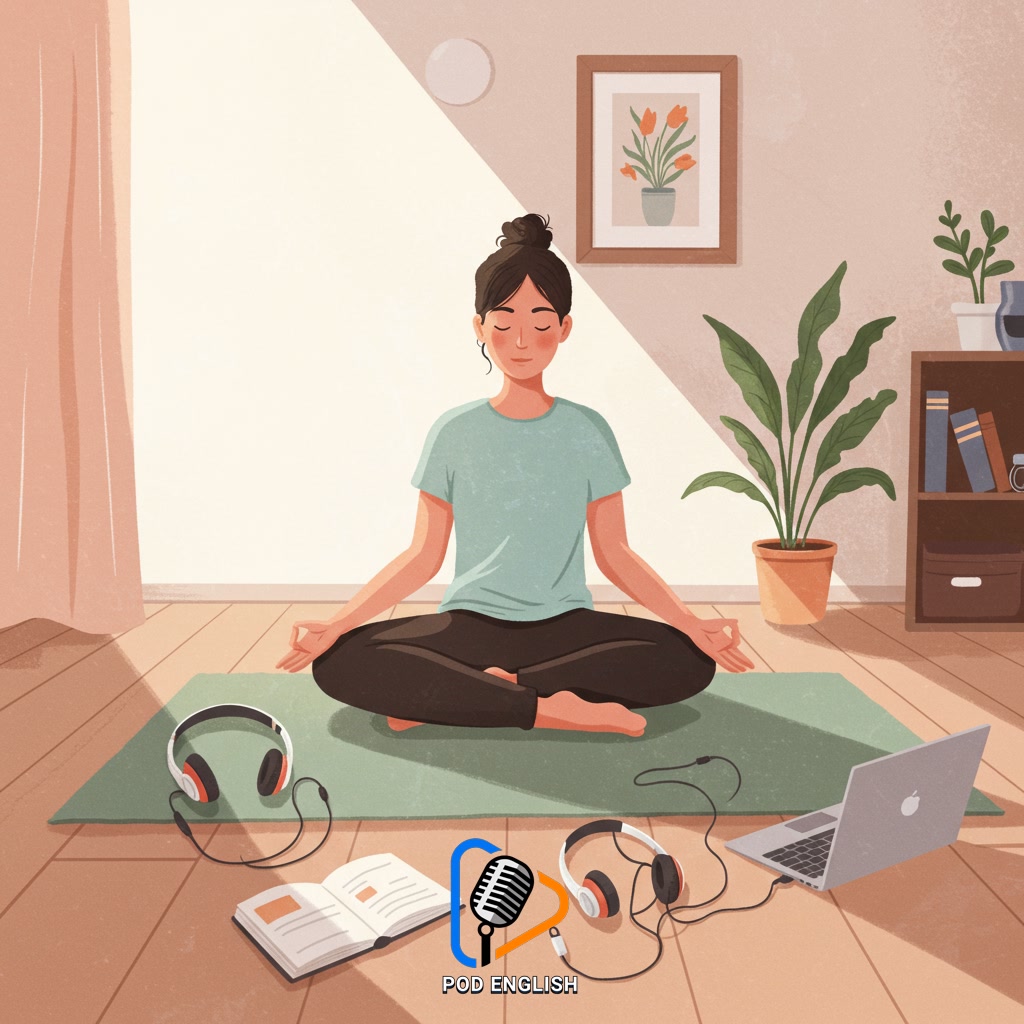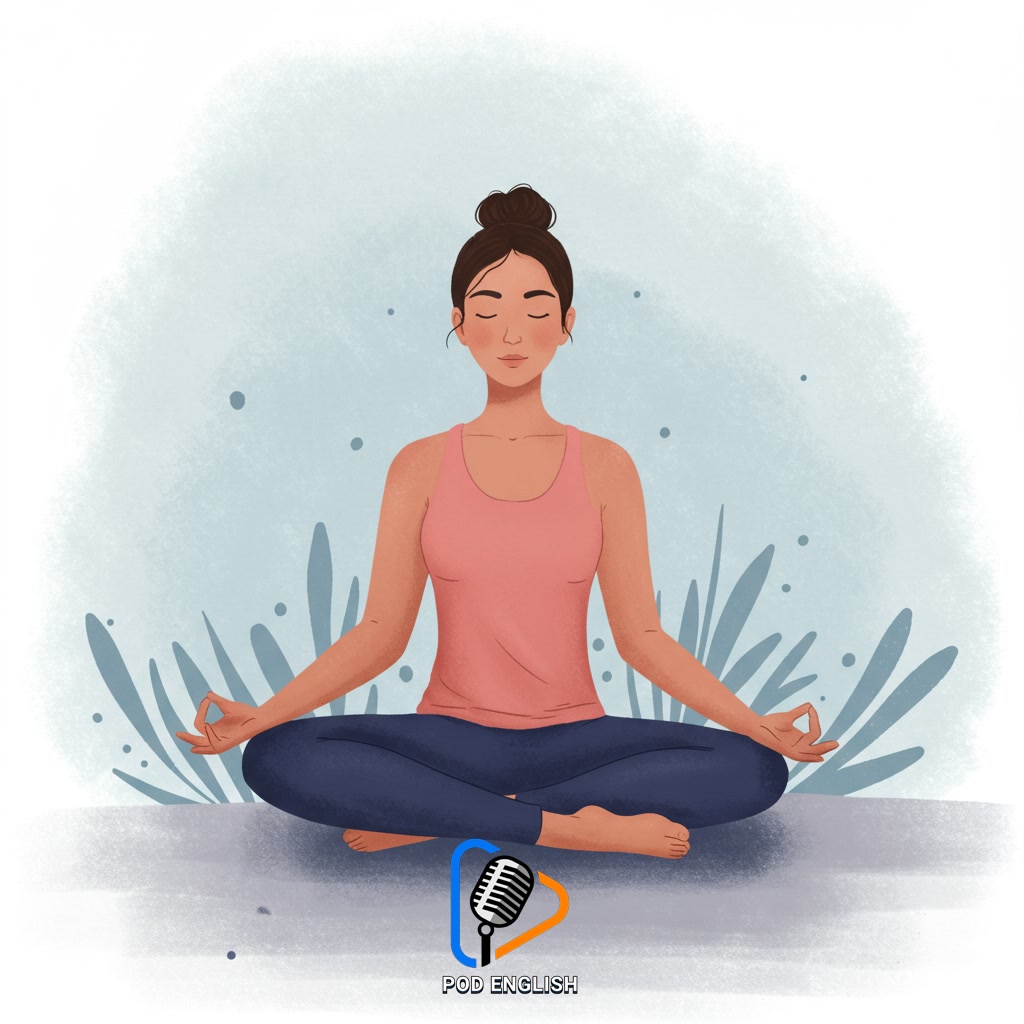Learn English
Yoga for English Learners: Boost Focus and Mental Clarity

This content explores how incorporating yoga practices can significantly benefit individuals involved in learning English. It highlights specific techniques aimed at boosting focus and improving mental clarity. By enhancing cognitive function, these yoga methods provide valuable support for the language acquisition process, helping learners concentrate better and retain information.
Table of Contents
- Section 1: Introduction: Connecting Yoga, Learning English, and Mental Clarity
- Section 2: The Science Behind Yoga’s Impact on Focus and Cognition
- Section 3: Practical Yoga Poses and Breathing Exercises for Enhanced Concentration
- Section 4: Integrating Yoga into Your Daily English Learning Routine
- Section 5: Beyond Focus: How Yoga Supports Stress Reduction in Language Acquisition
- Section 6: Getting Started: Tips for Beginners and Consistency
- Section 7: Conclusion: Cultivating a Focused Mind for Successful English Learning
Section 1: Introduction: Connecting Yoga, Learning English, and Mental Clarity
Learning a new language like English can be challenging, often requiring significant focus and sustained mental effort. Many learners find it difficult to concentrate, manage stress related to learning, and maintain clarity during study sessions. This document explores a unique approach to support your English learning journey: integrating simple yoga practices. Beyond physical benefits, yoga is widely recognized for its ability to calm the mind, enhance concentration, and boost overall mental clarity. By exploring the connection between yoga techniques and cognitive function, we will see how simple practices can create a more focused and effective learning environment, making the process of acquiring English skills smoother and more enjoyable.

Section 2: The Science Behind Yoga’s Impact on Focus and Cognition
Understanding how yoga helps with learning, especially English, involves looking at its effects on the brain and body. When you practice yoga, particularly the breathing exercises (pranayama) and mindful movements, it helps to calm your nervous system. This reduces the levels of stress hormones, like cortisol, which are known to impair concentration and memory. A calmer state allows your brain to function more efficiently, making it easier to focus on language tasks and process new information. Furthermore, regular yoga practice has been shown to increase activity in areas of the brain associated with attention, decision-making, and cognitive flexibility. By improving blood flow and promoting a state of relaxed alertness, yoga creates optimal conditions for learning and retaining English vocabulary and grammar.

Section 3: Practical Yoga Poses and Breathing Exercises for Enhanced Concentration
Building on the understanding of how yoga impacts the brain and body, let’s explore practical techniques you can incorporate. Specific yoga poses, or asanas, can significantly enhance your ability to focus. For instance, balancing poses like Tree Pose (Vrksasana) require intense concentration to maintain stability, directly training your focus. Grounding poses such as Warrior II (Virabhadrasana II) or Seated Forward Bend (Paschimottanasana) help calm the nervous system, reducing mental chatter. Complementing these are breathing exercises (pranayama). Simple practices like deep diaphragmatic breathing or alternate nostril breathing (Nadi Shodhana) increase oxygen flow to the brain and regulate energy levels, promoting clarity and reducing anxiety often associated with learning challenges. Regularly practicing these poses and breathwork can create a calmer, more focused state of mind, making it easier to absorb and retain new English vocabulary and grammar.

Section 4: Integrating Yoga into Your Daily English Learning Routine
Building on the understanding of how yoga impacts the brain and body, let’s explore practical techniques you can incorporate. Specific yoga poses, or asanas, can significantly enhance your ability to transition from understanding the ‘why’ to implementing the ‘how’. Integrating yoga into your daily English learning routine doesn’t require hours on the mat. Start small: perhaps a few minutes of mindful breathing before a study session to calm your mind and improve focus. Try a simple seated stretch or a gentle standing pose during a study break to re-energize. Consider incorporating a short 15-minute yoga sequence in the morning to set a focused tone for the day’s learning, or in the evening to release tension and aid information retention before sleep. Consistency is key; even brief, regular practice can create a noticeable difference in your concentration, memory, and overall mental clarity for tackling English language challenges.

Section 5: Beyond Focus: How Yoga Supports Stress Reduction in Language Acquisition
While specific poses enhance focus as discussed, yoga’s benefits extend significantly to managing the stress often inherent in language acquisition. The pressure to perform, fear of errors, and feeling overwhelmed by new information can create anxiety that hinders learning. Yoga practices, particularly mindful breathing exercises (pranayama) and gentle, flowing movements, activate the body’s relaxation response. This helps calm the nervous system, easing tension in the mind and body. By consciously releasing stress, learners can approach their studies with a clearer head and a more open, receptive attitude, making the learning process less daunting and more enjoyable. Reducing stress not only improves mental clarity but also fosters resilience, enabling learners to navigate challenges in their English journey with greater ease and confidence.

Section 6: Getting Started: Tips for Beginners and Consistency
Following on from managing stress, the first step to integrating yoga for better focus in English learning is simply starting. Beginners don’t need complex poses or long sessions. Begin with short, accessible practices, even just 5-10 minutes daily. Consistency is key; a regular routine, perhaps before or after your English study time, trains your mind to settle and concentrate. Don’t worry about perfection; listen to your body and focus on the breath. Finding a comfortable space and time makes it easier to stick with it. Remember, the goal is to cultivate a calmer mind, making it easier to absorb and process new English information effectively over time. Regular, gentle practice builds the mental discipline needed for focused language study.

Section 7: Conclusion: Cultivating a Focused Mind for Successful English Learning
Building on the simple beginnings we discussed, integrating yoga into your routine is a practical step towards enhancing your English learning journey. By consistently practicing even short sequences or simple breathing exercises, you actively train your mind to stay present and focused. This cultivated mental clarity directly translates into more effective study sessions. You’ll find it easier to concentrate during lessons, retain new vocabulary and grammar rules, and improve your comprehension skills. Yoga helps quiet the mental noise that often hinders learning, creating an optimal state for absorbing and processing information. Embracing these practices isn’t just about physical well-being; it’s a strategic approach to building the cognitive foundation necessary for successful language acquisition. Make this commitment to your focus, and unlock your full potential in mastering English.














